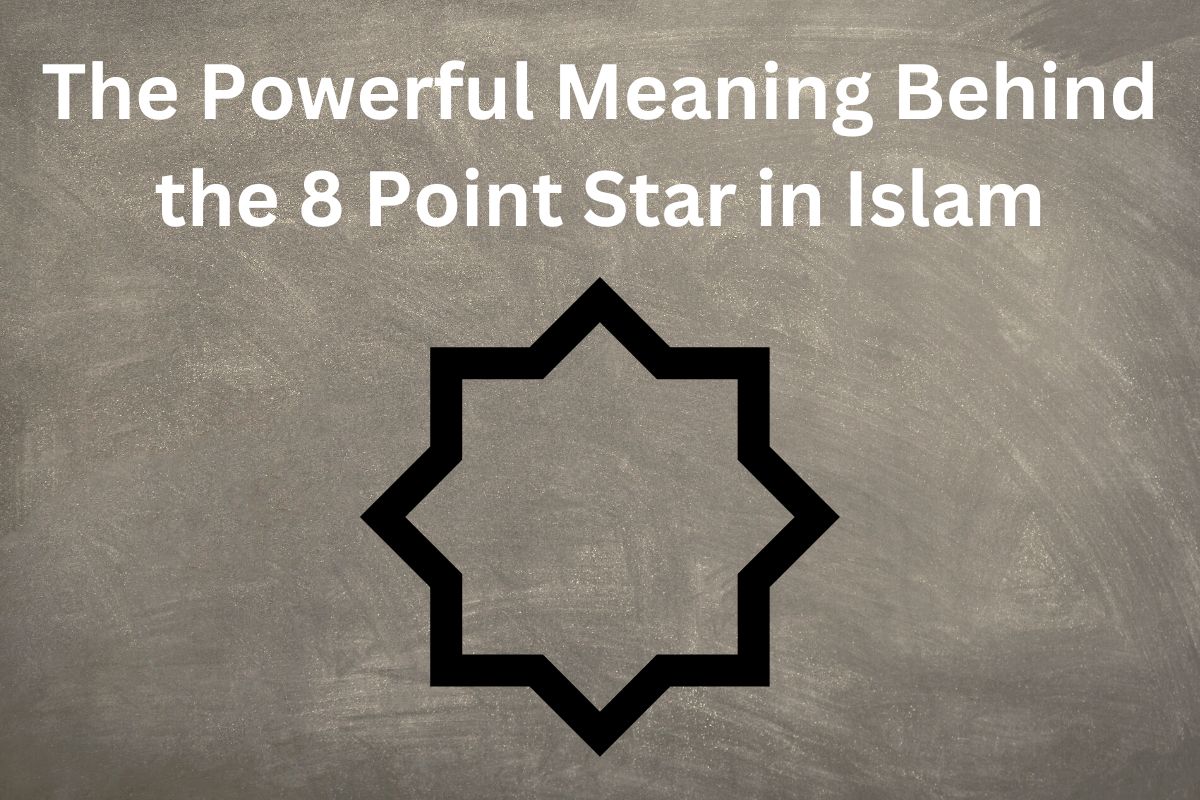The 8 pointed Star is a common symbol in Islamic art and architecture. It is known as the "Khatim" or "Khatim-Sulayman," which means "seal of the prophets" in Arabic. This symbol is often used to depict the Islamic faith and the unity of the Muslim community. The 8 pointed Star is also a common symbol in Hindu and Buddhist cultures.
Significance of 8 Point Star
The 8 point Star represents the eight nations considered Islam’s first supporters. The star icon also represents the eight qualities of the Prophet Muhammad: wisdom, justice, kindness, generosity, peace, patience, trustworthiness, and humility.
The 8 pointed Star is often used as a decorative element in Islamic art and architecture. It can be found on buildings, textiles, and other objects.
It also represents the eight-spoked wheel of Buddhist Dharma. In Hinduism, it is often associated with the god Krishna and the goddess Lakshmi. It is also known as the “star of Lakshmi” and is believed to bring good luck and prosperity.

History of the Octagram & Relation With the 8 Point Star
The Octagram is a symbol of eight points arranged in a symmetrical pattern. It has been associated with various religious and spiritual traditions throughout history. In Islamic tradition, the Octagram is known as the Khatim-Sulayman or Khatim.
It means “seal of the prophets.” It is believed to represent the seal of the Prophet Muhammad. It is often inscribed on amulets and other objects as a protective charm. The Octagram is also used in other spiritual traditions, including some forms of mysticism and esoteric Christianity.
These traditions represent the union of the spiritual and material worlds and the connection between the self and the divine. Nonetheless, the Seal of Solomon is sometimes related to Khatim-Sulayman or Khatim.
There’s no strong connection between the two. However, the use of the Star is most likely related to earlier appearances of the six-pointed Star in Judaic designs known as the “seal of Solomon.”
According to Muslim legend, Solomon used the Star to capture djinns and genies, the immaterial counterparts to humans.

What Does the 8 Pointed Star Mean in Islam?
The 8 pointed Star, or Rub el Hizb is a symbol used in Islamic calligraphy, which is the artistic practice of handwriting and decorative writing in Islamic culture. It consists of two overlapping squares, with a line running through the center to divide them into four equal quadrants.
The eight points of the Rub el Hizb symbolize the eight directions in which Muslims must pray. The symbol is also often used to represent the unity and completeness of the Islamic faith.
It can be found in many objects, including flags, coins, and religious texts.
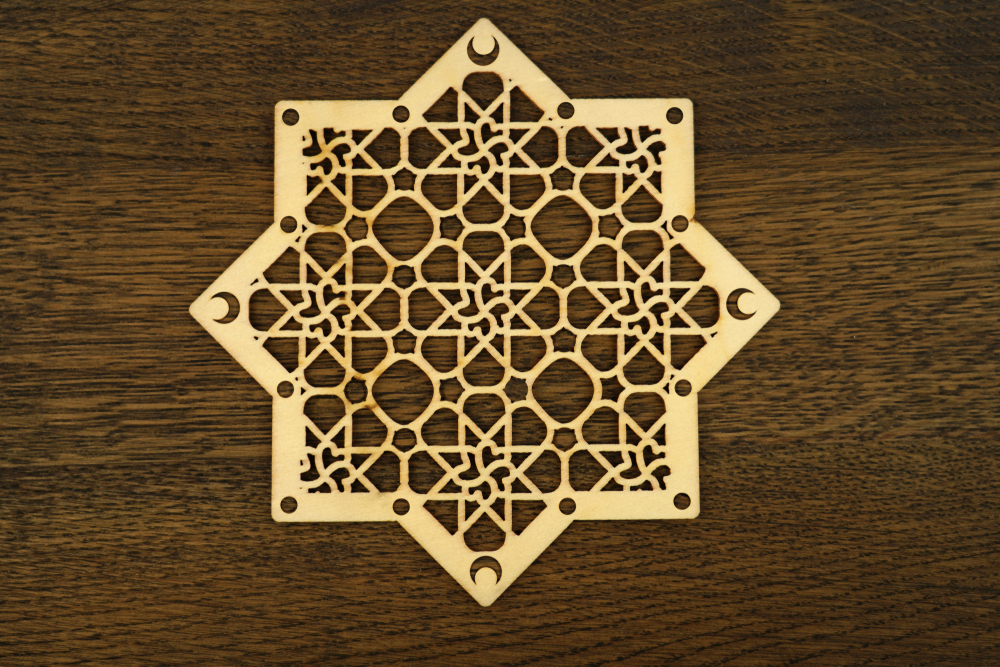
The 8 Pointed Star in Other Cultures
While the 8 pointed star is used primarily in Islam, it also has use in other cultures and religious traditions. It plays and important role in Hinduism as well as Buddhism. In addition, it has a significant history in Greek and Babylonian mythology.
Does the 8 Pointed Star Have Special Meaning in Hinduism?
The 8 pointed Star, known as the Ashtamangala, symbolizes good fortune in Hinduism. It is often associated with the goddess Lakshmi, the goddess of wealth and prosperity. Thus, it is known as the Star of Lakshmi.
The Ashtamangala is also sometimes used as an emblem of the eight auspicious qualities of a spiritual teacher. These qualities are:
- Sraddha (faith)
- Virya (energy)
- Smrti (awareness)
- Samadhi (meditation)
- Prajna (wisdom)
- Pranidhana (vow)
- Kshanti (patience)
- Dhriti (courage)
The Ashtamangala is often used in Hindu ceremonies and rituals and is sometimes displayed in the homes of devotees. It is considered a powerful symbol of good fortune. It is believed to bring prosperity and happiness to those who show it.

Wheel Of Dharma
The Wheel of Dharma is a term used in Buddhism to refer to the teachings of the Buddha. The wheel is often depicted as a symbol of the Dharma, and it is said to represent the endless cycle of birth, death, and rebirth that all beings experience.
The wheel is also associated with the idea of impermanence, as it is constantly turning and changing. The teachings of the Buddha, known as the Dharma, are considered the way to end this cycle and achieve enlightenment.
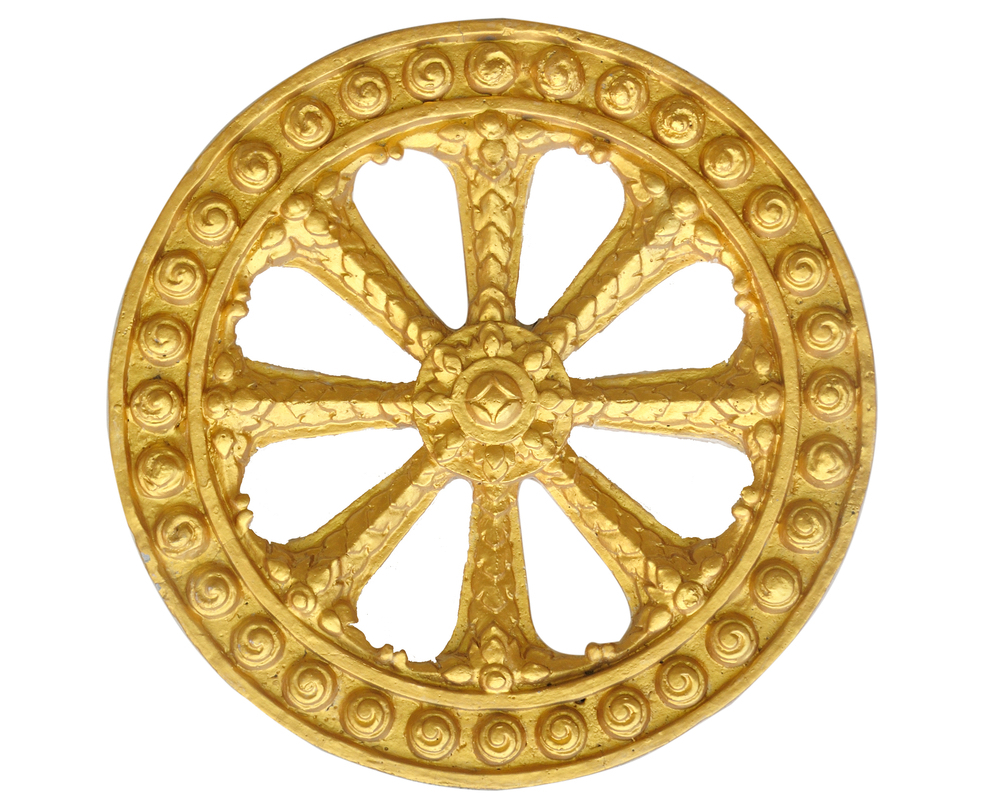
8 Pointed Star in Buddhism
The 8 pointed Star is a common symbol in Buddhism and represents the Eightfold Path, the path to enlightenment. The Eightfold Path consists of eight practices:
- Right Understanding
- Right Intention
- Right Speech
- Right Action
- Right Livelihood
- Right Effort
- Right Mindfulness
- Right Concentration
These practices are considered the means to overcome suffering and achieve enlightenment. The 8 pointed Star is a reminder of the importance of following the Eightfold Path to attain spiritual growth and well-being among Buddhists.
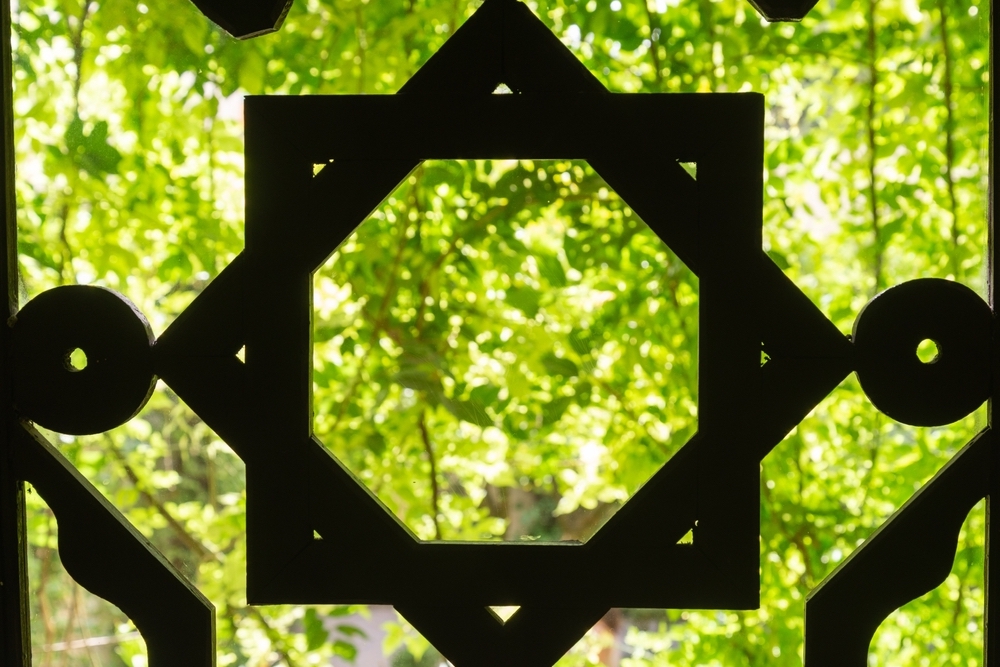
Greek Mythology
The 8 point Star is often associated with the goddess Aphrodite in Greek mythology. She was the goddess of love, beauty, and sexuality and was often depicted holding an 8 point star.
One story tells of how Aphrodite came to possess the 8 point Star. According to legend, the Star was originally a gift from the god Zeus to the mortal woman Alcmene, with whom he had fallen in love. However, Aphrodite became jealous of Alcmene and stole the Star from her.

Babylonian Or Mesopotamian Mythology
Ishtar was the goddess of fertility, love, and war. She was one of the most significant deities in the Mesopotamian pantheon. Her cult was widespread throughout the ancient Near East.
Goddess Ishtar was associated with the planet Venus or Greek Aphrodite. She was often depicted holding an eight-pointed star, the Star of Ishtar, symbolizing her power and authority. In some myths, Ishtar is described as a fierce and warlike goddess who would stop at nothing to achieve her goals.
In others, she is depicted as a loving and nurturing figure who helped to bring new life into the world. In either case, Ishtar was a powerful and influential goddess in the pantheon of Greek mythology.
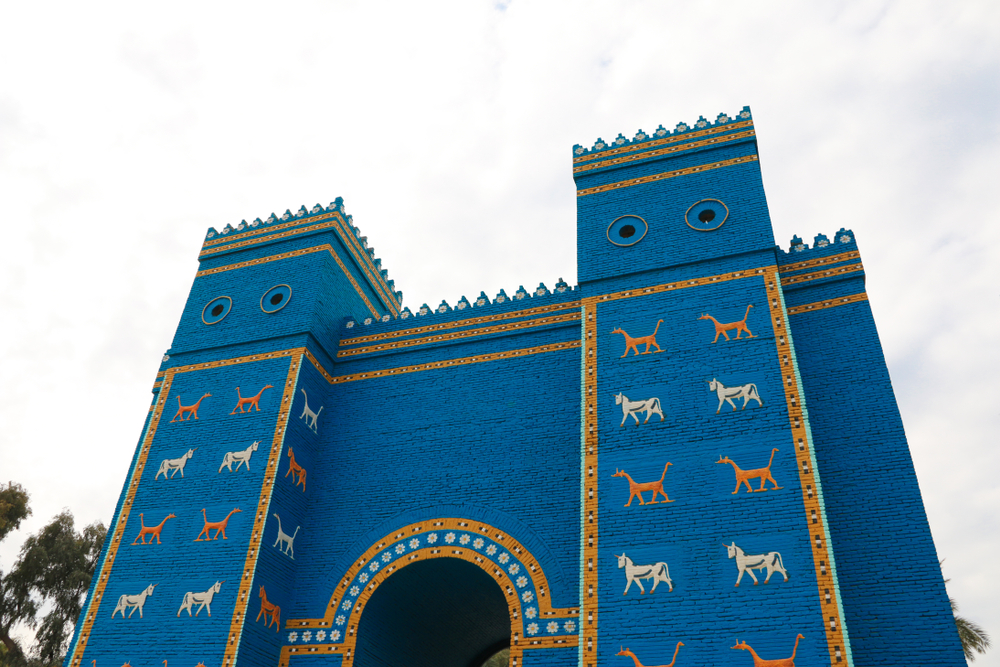
What Does a 7 Point Star Signify?
A 7-point star is a symbol often associated with different meanings and uses. In Catholicism, the heptagram became a classic symbol for warding off evil. Kabbalist Judaism also employs the emblem.
The heptagram is used in Islam to represent the first seven verses of the Quran. In Aleister Crowley’s occult system Thelema, the heptagram is used as the symbol for Babalon.

